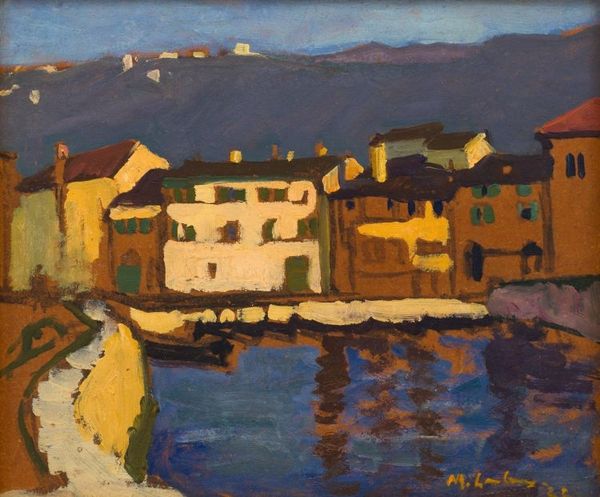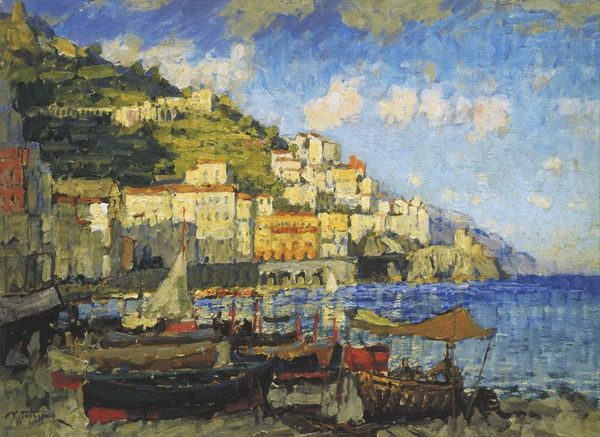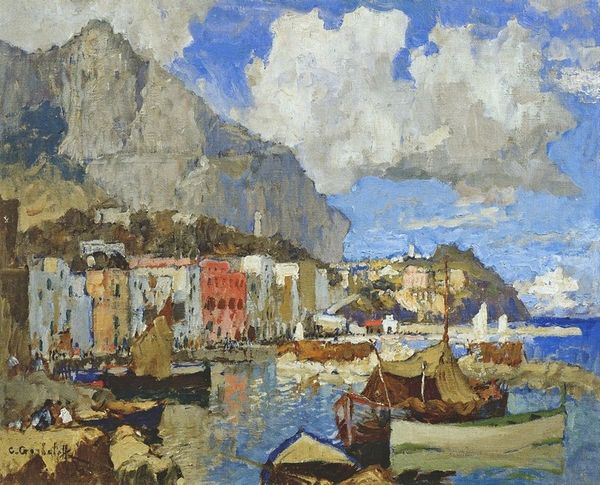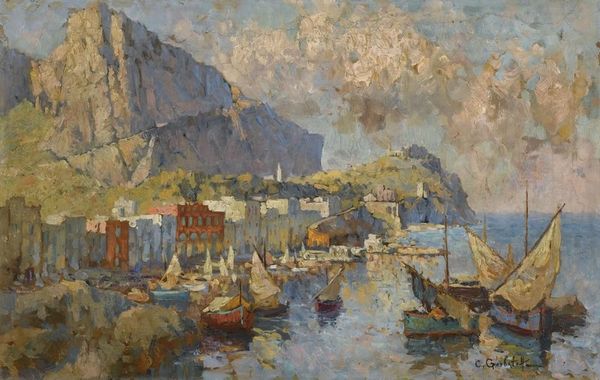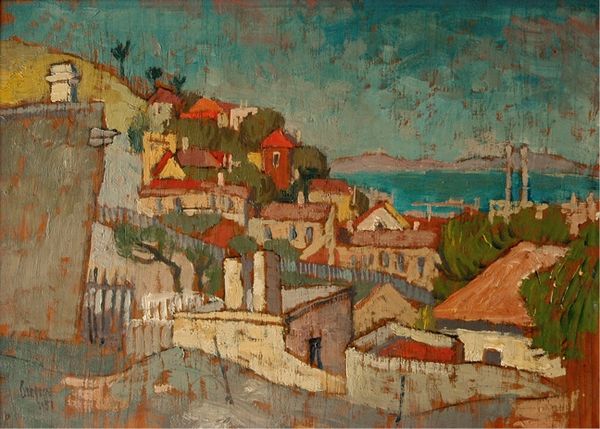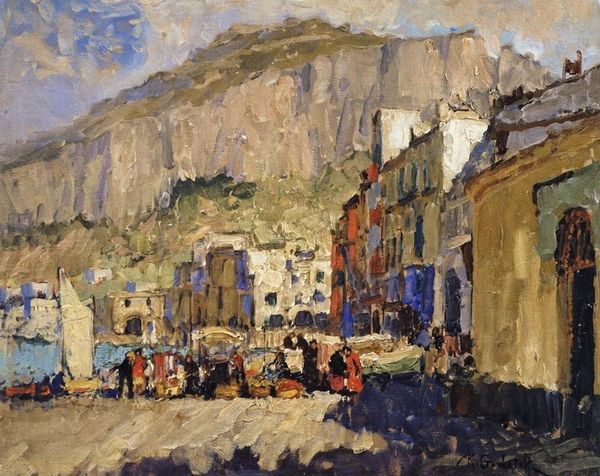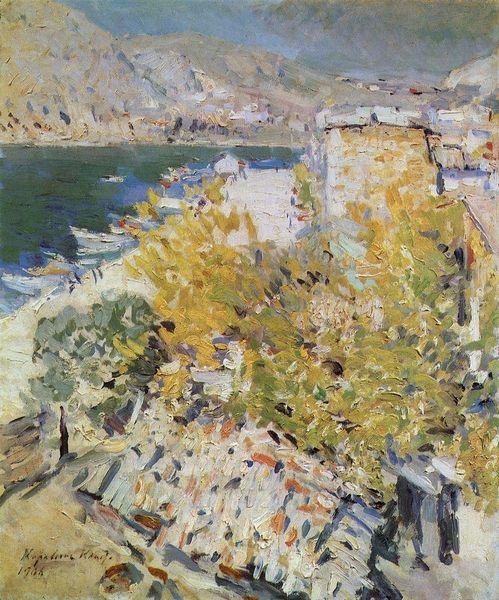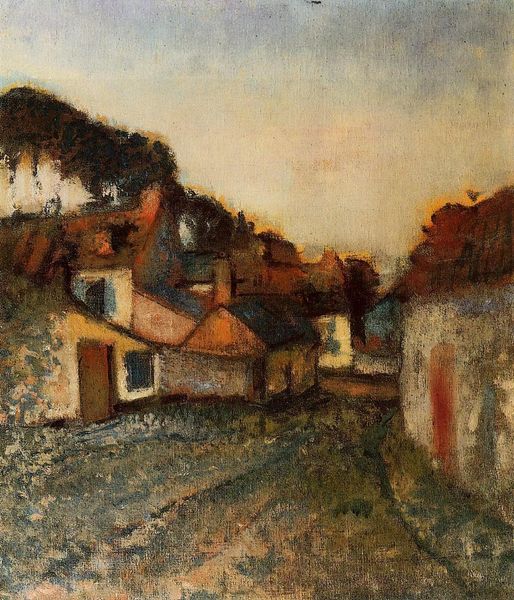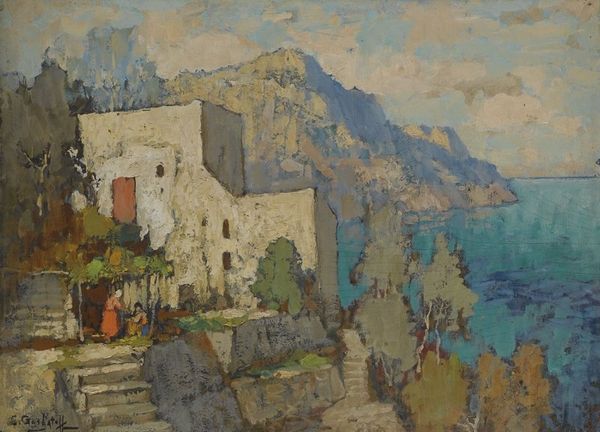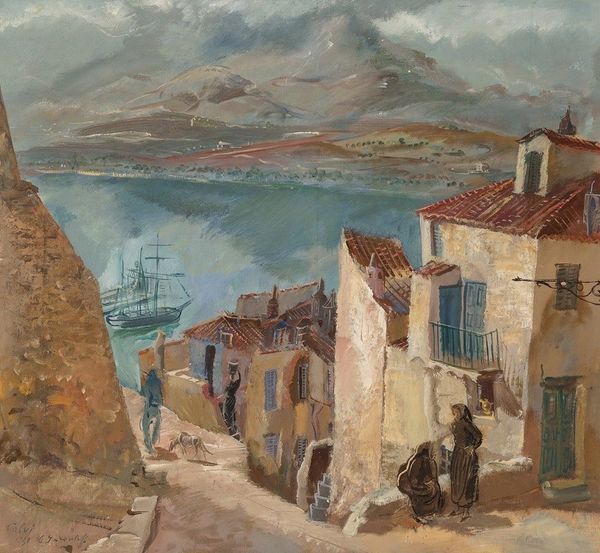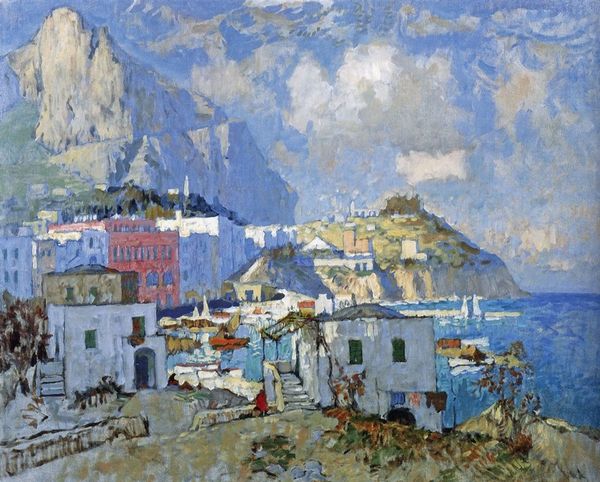
Copyright: Public domain
Editor: So, this is "A View of Amalfi," painted in 1925 by Konstantin Gorbatov. It's an oil painting, and right away, I’m struck by its slightly melancholic mood, even though it's a beautiful cityscape. What stands out to you? Curator: The painting resonates deeply, particularly the way the city seems nestled—almost protected—by the landscape. Think of the cultural weight of a city like Amalfi, a crossroads of civilizations, painted against the imposing, sheltering mountain. Do you see how the dark clouds create a sort of visual echo of the mountain itself? Editor: Yes, the darkness looming above and behind creates a powerful backdrop, especially with the illuminated windows punctuating the buildings like little beacons. Curator: Exactly. And what do those beacons signify to you? Consider the universal symbolism of light within darkness. In countless cultures, it represents hope, knowledge, even divinity. These homes, lit against the encroaching night, could suggest resilience or a persistent spirit. Does that change your initial impression of melancholia? Editor: I think so. Seeing it that way, there's a real sense of perseverance here. Maybe not just melancholy, but a quiet strength. Curator: I agree. It’s a testament to how Gorbatov utilizes symbols to elicit emotional depth. And understanding those symbols connects us more profoundly to the work. Editor: I never considered the painting as more than just the sum of its parts and appreciate the perspective you gave on the hidden language of art. Curator: Every brushstroke contains a hidden story, and in art we seek to become literate to the symbolic language within these compositions.
Comments
No comments
Be the first to comment and join the conversation on the ultimate creative platform.
